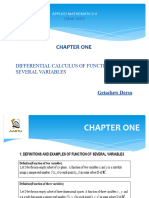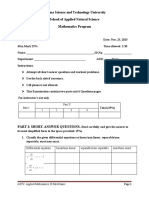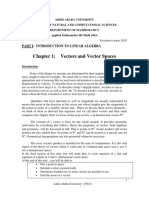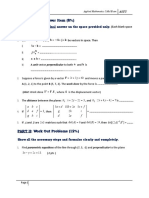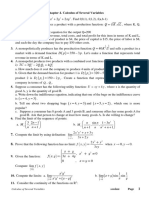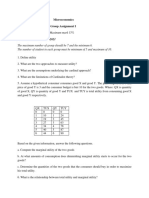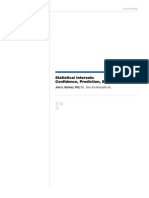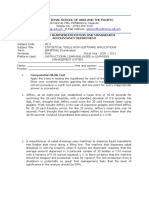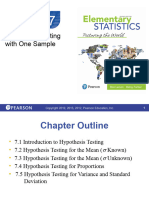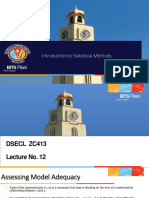0% found this document useful (0 votes)
273 views63 pagesAddis Ababa Science & Technology University Department of Electrical & Computer Engineering
The document discusses key concepts in probability and random variables including the cumulative distribution function, probability density function, expected value, variance, moments, and special distributions. It provides definitions and properties of random variables, describes how to calculate the CDF and PDF, and explores functions like the characteristic function that can be used to find moments of a random variable.
Uploaded by
Obsi EliasCopyright
© © All Rights Reserved
We take content rights seriously. If you suspect this is your content, claim it here.
Available Formats
Download as PPT, PDF, TXT or read online on Scribd
0% found this document useful (0 votes)
273 views63 pagesAddis Ababa Science & Technology University Department of Electrical & Computer Engineering
The document discusses key concepts in probability and random variables including the cumulative distribution function, probability density function, expected value, variance, moments, and special distributions. It provides definitions and properties of random variables, describes how to calculate the CDF and PDF, and explores functions like the characteristic function that can be used to find moments of a random variable.
Uploaded by
Obsi EliasCopyright
© © All Rights Reserved
We take content rights seriously. If you suspect this is your content, claim it here.
Available Formats
Download as PPT, PDF, TXT or read online on Scribd
/ 63


